Abstract
Rats were exposed to an interlocking fixed-ratio 150 fixed-interval 5-minute schedule of food reinforcement and then to yoked variable-ratio schedules in which individual ratios corresponded exactly to the ratios of responses to reinforcement obtained on the interlocking schedule. After additional training with the interlocking schedule, the rats were exposed to yoked variable-interval schedules in which intervals corresponded to the intervals between successive reinforcements obtained on the second interlocking schedule. Response rates were highest in the yoked VR condition and lowest in the yoked VI, while intermediate rates characterized the interlocking schedule. Break-run patterns of responding were generated by the interlocking schedule for all subjects, while both the yoked VR and VI schedules produced comparatively stable local rates of responding. These results indicate that responding is sensitive to the interlocking schedule's inverse relationship between reinforcement frequency and responses per reinforcement.
Full text
PDF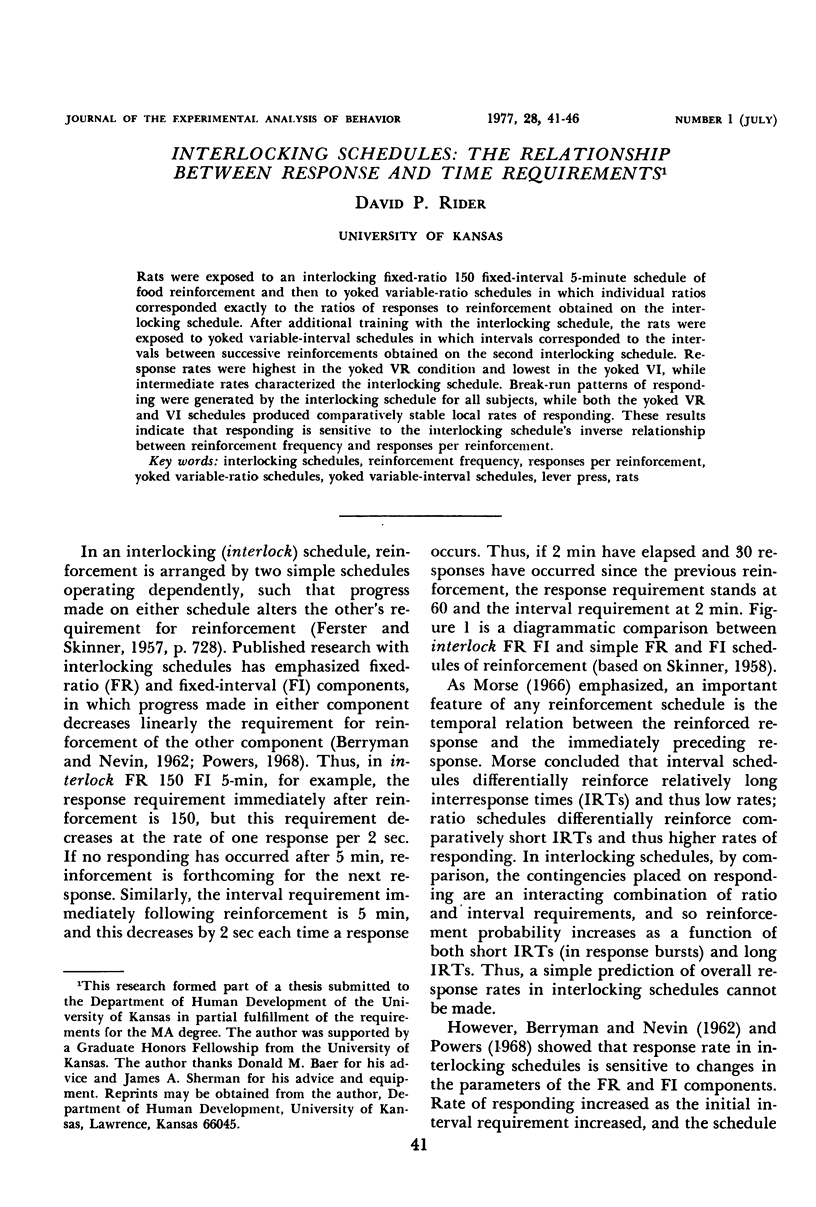
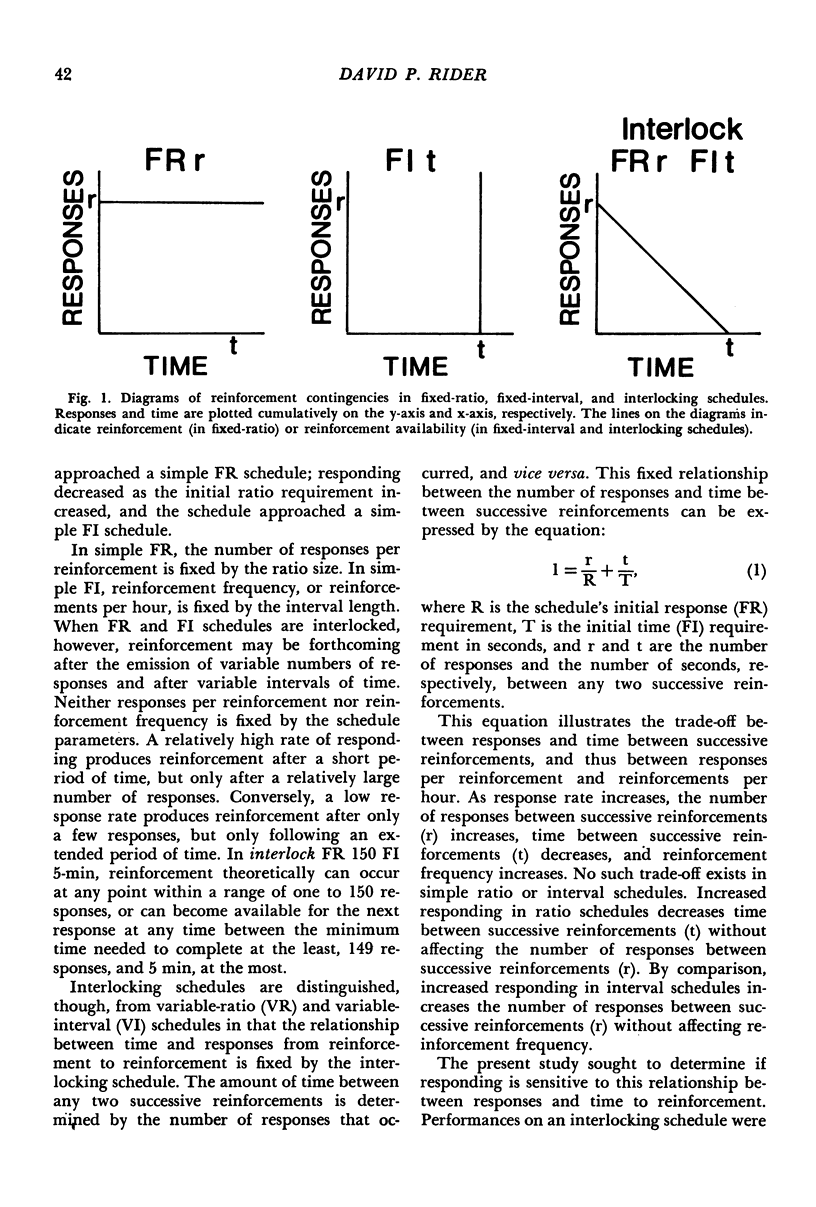
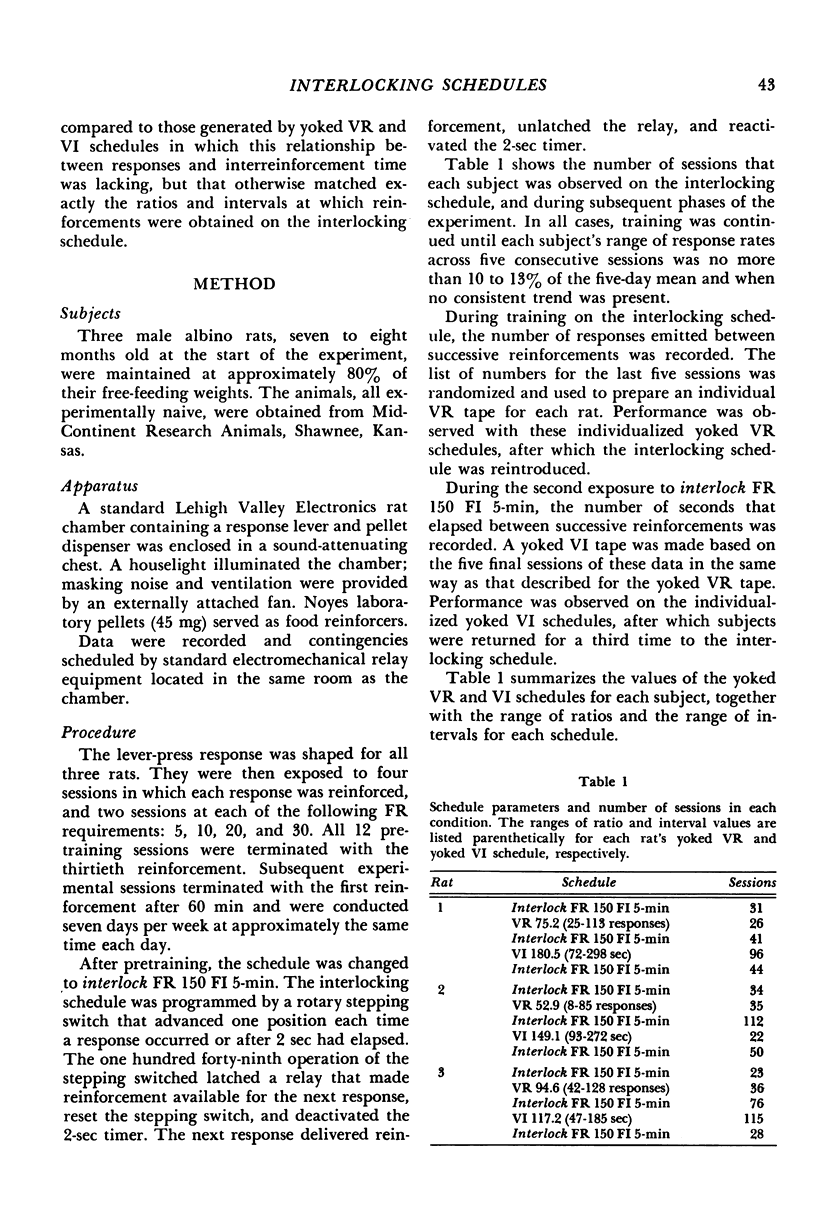
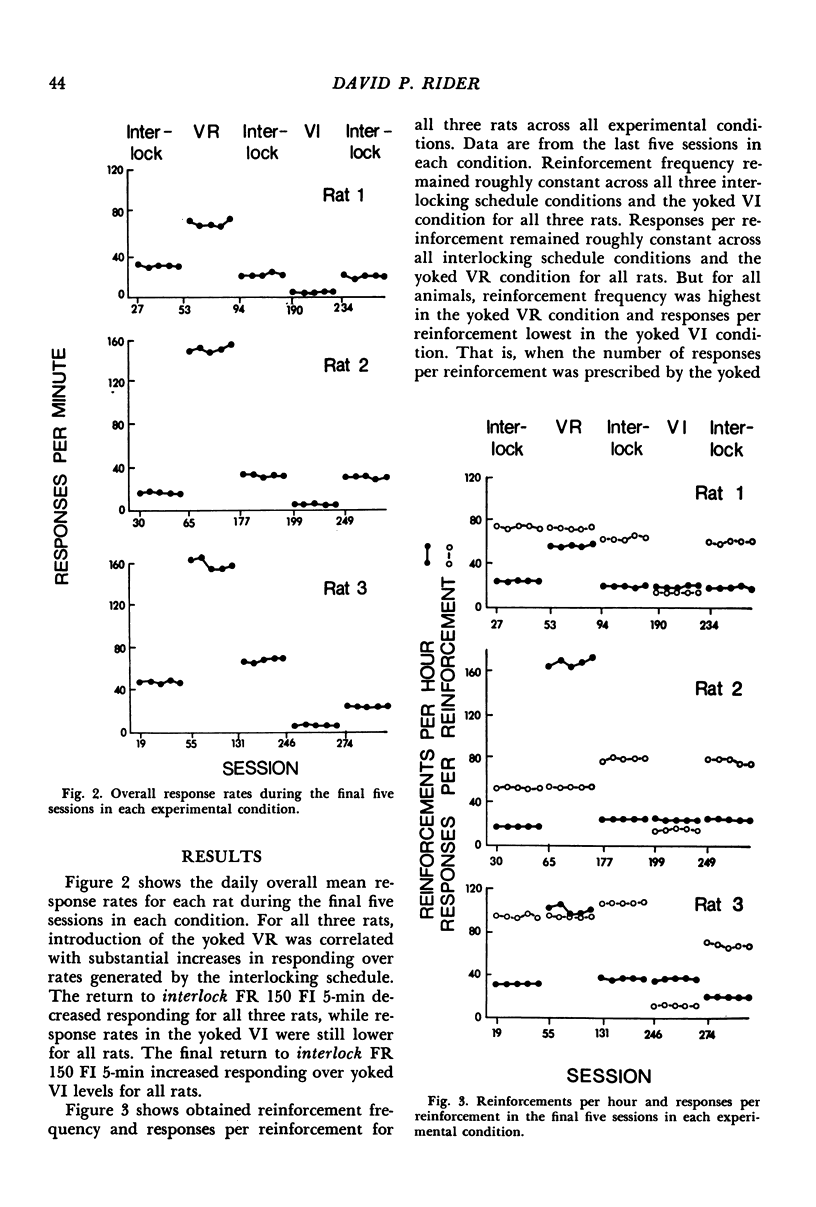
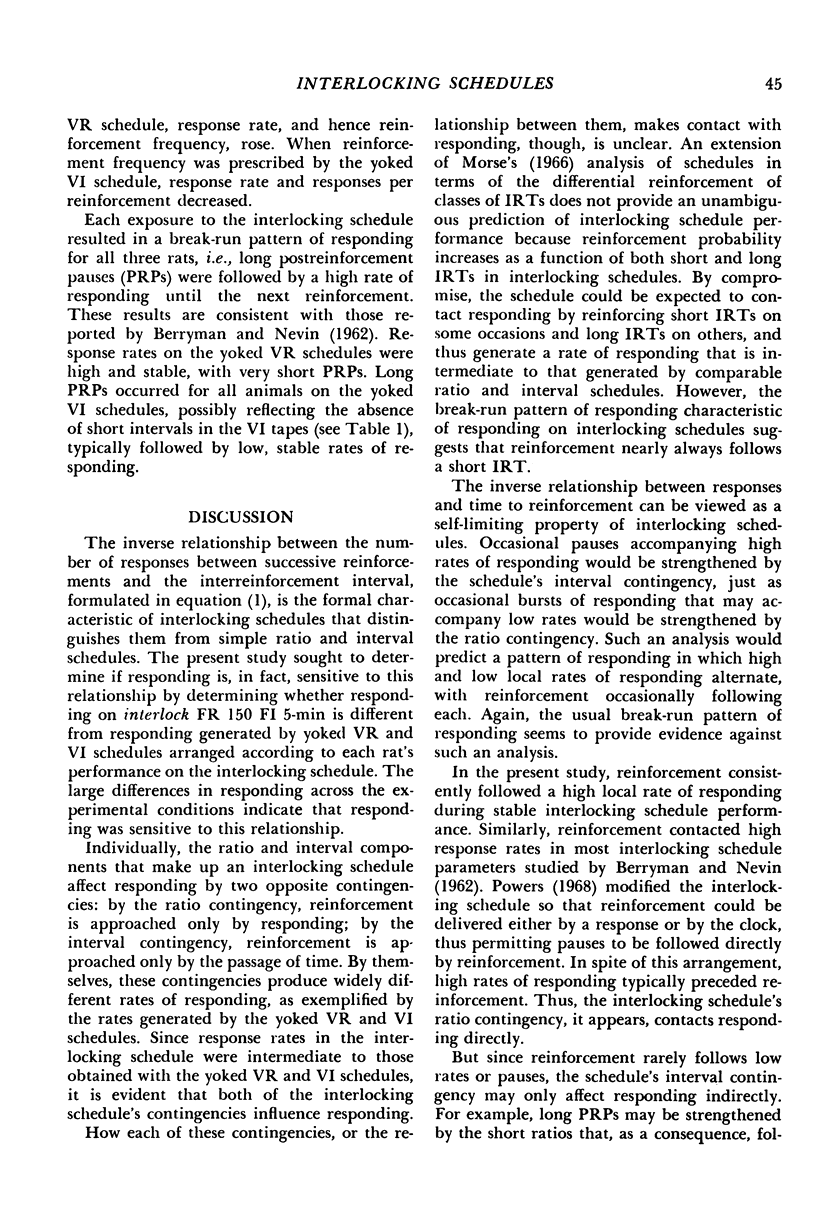
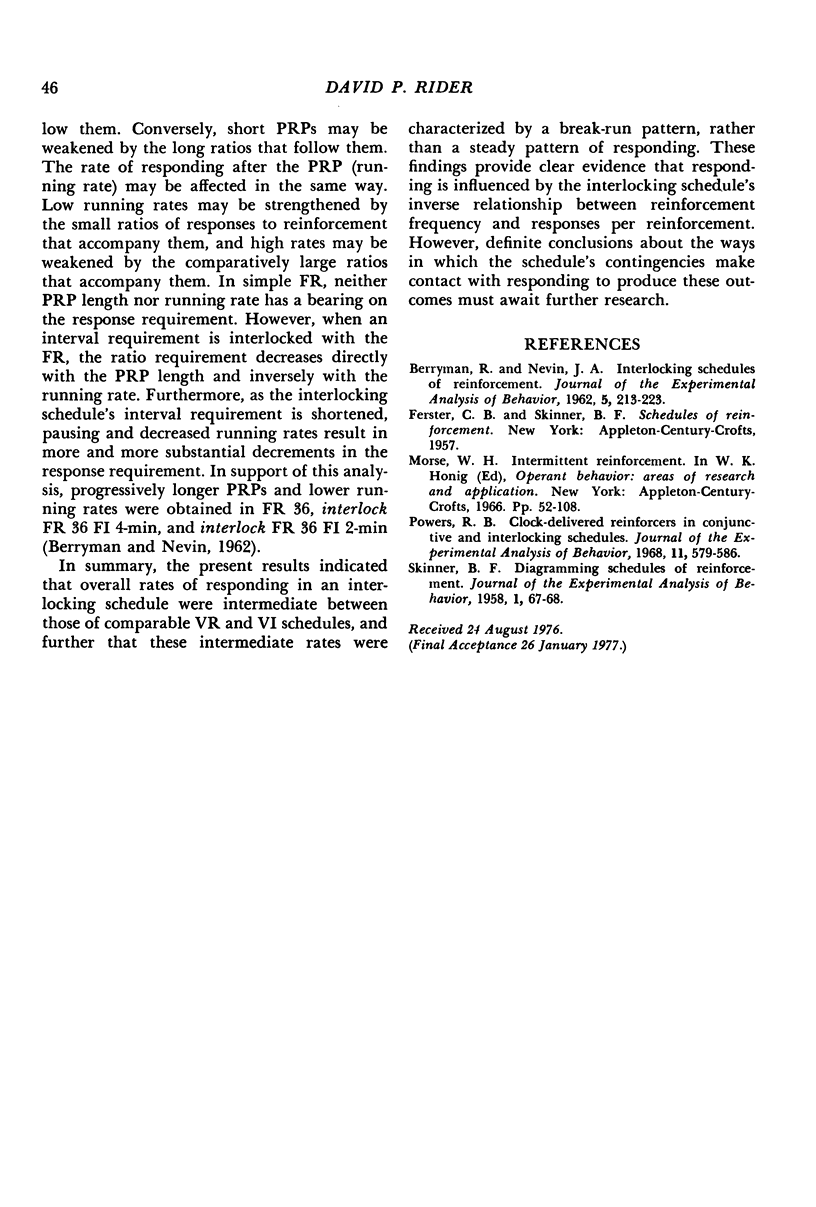
Selected References
These references are in PubMed. This may not be the complete list of references from this article.
- BERRYMAN R., NEVIN J. A. Interlocking schedules of reinforcement. J Exp Anal Behav. 1962 Apr;5:213–223. doi: 10.1901/jeab.1962.5-213. [DOI] [PMC free article] [PubMed] [Google Scholar]
- Powers R. B. Clock-delivered reinforcers in conjunctive and interlocking schedules. J Exp Anal Behav. 1968 Sep;11(5):579–586. doi: 10.1901/jeab.1968.11-579. [DOI] [PMC free article] [PubMed] [Google Scholar]
- SKINNER B. F. Diagramming schedules of reinforcement. J Exp Anal Behav. 1958 Jan;1:67–68. doi: 10.1901/jeab.1958.1-67. [DOI] [PMC free article] [PubMed] [Google Scholar]


